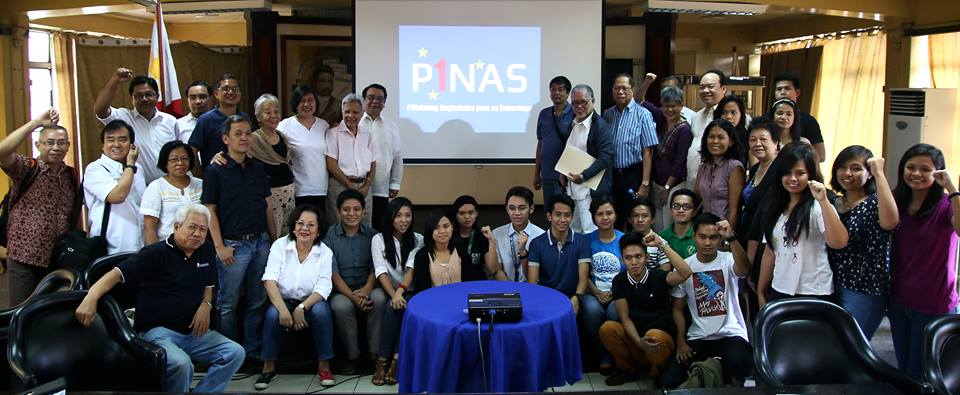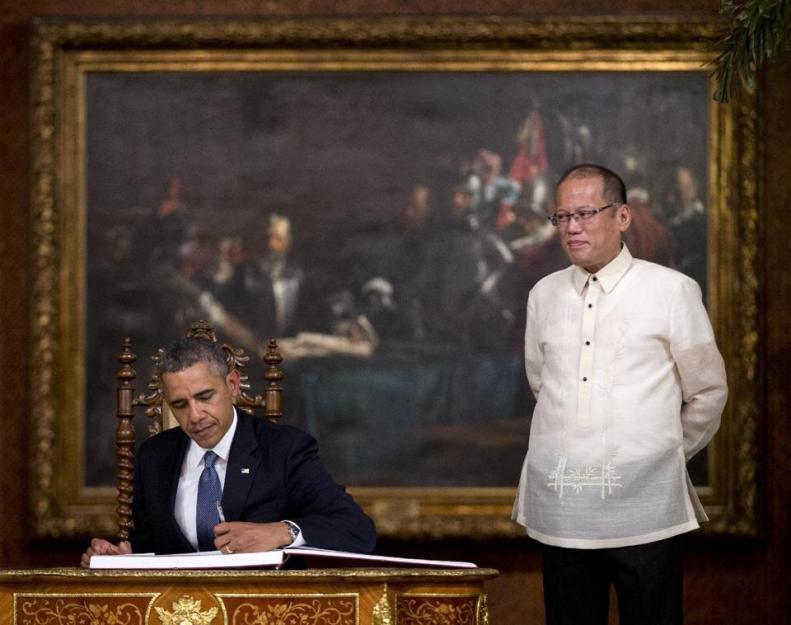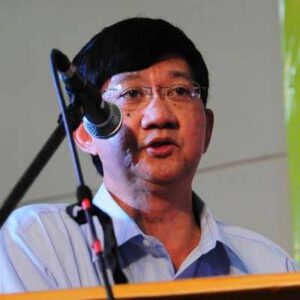 As the nation celebrates 117th Anniversary of the Philippine Declaration of Independence, it is necessary to confront one of the most trying issues facing our national sovereignty today: the Enhanced Defense Cooperation Agreement (EDCA). For this reason, we interviewed a known expert on this subject matter, Dr. Roland Simbulan, a professor of Development Studies and Public Management at the University of the Philippines, Vice Chair of the Board of Directors, Center for People Empowerment in Governance (CenPeg), and author of The Bases Of Our Insecurities. We asked him some questions to deepen our understanding of EDCA and our long-standing security relations with the United States.
As the nation celebrates 117th Anniversary of the Philippine Declaration of Independence, it is necessary to confront one of the most trying issues facing our national sovereignty today: the Enhanced Defense Cooperation Agreement (EDCA). For this reason, we interviewed a known expert on this subject matter, Dr. Roland Simbulan, a professor of Development Studies and Public Management at the University of the Philippines, Vice Chair of the Board of Directors, Center for People Empowerment in Governance (CenPeg), and author of The Bases Of Our Insecurities. We asked him some questions to deepen our understanding of EDCA and our long-standing security relations with the United States.
Manila Today (MT):What can you say about the claim that the EDCA is a deterrent against external security threats, such as China?
Simbulan: The claim that the EDCA or Enhanced Defense Cooperation Agreement is a deterrent against external security threats such as those presented by China, immediately collapses in the light of recent aggressive moves by China. The U.S. despite its existing Mutual Defense Treaty and other existing agreements with the[quote_right]In fact, the U.S. as our defense treaty partner even today refuses to recognize the Philippine claim on the Spratlys including the islands already controlled by the Philippines.[/quote_right]Philippines did not even lift a finger when China took control of the Scarborough Shoals (Bajo de Masinloc) and its surrounding waters which are part of the municipality of Masinloc, Zambales. After failing to deter this annexation by China of Philippine territory and waters, the EDCA since its signing last April 2015, has been inutile in recovering lost Philippine territory. In fact, the U.S. as our defense treaty partner even today refuses to recognize the Philippine claim on the Spratlys including the islands already controlled by the Philippines. Likewise, it did not even lift a finger when China started building structures and started their reclamation activities on the islets in the Spratlys.

The deterrence argument has long been totally discredited historically. During the outbreak of World War II, the United States maintained at least 35 army, navy and air force bases in Luzon, Visayas and Mindanao and the headquarters of the United States Armed Forces in the Far East (USAFFE) was based in the Philippines. These could not deter or prevent the Japanese Imperial Army from attacking, invading and occupying the Philippines; in fact, these U.S. bases became magnets of attack by Japan and were the first to be knocked out by Japan’s invasion force.
MT: Aside from the eight military bases of the AFP that have been identified, are we to expect more US sub-bases inside Philippine military bases? Can this “agreed locations” type of basing presented by EDCA be applied to other types of locations in the country, and are there already sub-bases in AFP camps located in the National Capital Region?
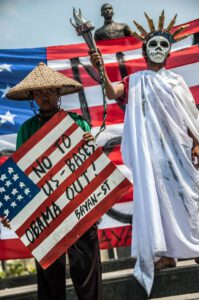
Simbulan: Under the provisions of the Visiting Forces Agreement, the Mutual Logistics Support Agreement, the entire Philippines is offered as a U.S. military base, as long as the subservient Philippine government agrees to assist in the locations requested by U.S. forces under the cover of “Balikatan”, ” joint military exercises for inter operability” . In particular, the provisions of the EDCA on “agreed locations” to be used as American military sub-bases actually cover not just any and all Philippine military camp all over the archipelago, but in any part of the Philippines. They can even override the jurisdiction of our local governments, as well as “international and national courts whenever disputes arise.” In practice, the locations targeted for “activities” of U.S. Special Operations Forces and U.S. drones used for surveillance and missile attacks do not even have to get the clearance from the treaty or host country. This is what happened when U.S. Seals Team 6 operated clandestinely and without the clearance of a treaty-ally Pakistan when they killed Osama Bin Laden inside that country.
Camp Aguinaldo, the headquarters of the Armed Forces of the Philippines (AFP), has long hosted a U.S. military facility inside the AFP camp since early 2000 when the Philippines supported the so-called U.S. global ‘war on terror’, as the first country to do so. This U.S. facility is under the cover of JUSMAG or the Joint U.S. Military Advisory Group, and the MDB or Mutual Defense Board. But INSIDE these U.S. facilities which are secured by U.S. Marines, the AFP has no access and control; in fact only U.S. military and U.S. civilians working for the Pentagon or NSA, CIA and FBI have security clearances to enter these restricted areas.
MT: So far, what have been the effects of these “agreed locations” basing to the people?
Simbulan: The Philippine government and the AFP have conspired with the U.S. government and its armed forces in concealing the “agreed locations” basing from the Filipino people. But we know for a fact that under the EDCA and VFA, U.S. military forces and civilian personnel working for the U.S. Department of Defense as well as U.S. civilian contractors are allowed access to all AFP/PNP camps all over the archipelago, and should they commit crimes or violations of Philippine laws, they are given protection and special treatment under the provisions of the VFA and EDCA. Should more U.S. forces and their drones violate Philippine laws or commit crimes against the Filipino people, they will surely be given special treatment under the terms of the VFA and the EDCA.
MT: In Article IV of EDCA, it states that nuclear weapons shall not be a part of prepositioned materiel of the US troops in the Philippines. Is this enough guarantee that they will respect our ban on nuclear weapons?
Simbulan: Prepositioning means deployment. After the Cold War, it became the policy of the U.S. strategic nuclear forces not to deploy in their land bases or facilities overseas

nuclear weapons, whether tactical, medium range, ballistic or intercontinental ballistic missiles. But the specified provision does not include the transit or transient movement of tactical nuclear weapons which are carried by visiting U.S. aircraft carriers, submarines, bombers, fighter planes. In fact, ballistic missiles carried by the nuclear-armed submarines of the U.S. Navy may visit or transit through the Philippines. Further, since the U.S. never really reveal or inform their treaty allies about the presence of nuclear weapons in their [quote_center]Even today, the U.S. armed forces maintains its “neither confirm nor deny policy” regarding nuclear weapons in its overseas bases and vessels.[/quote_center]facilities or vessels, this provision of EDCA is meaningless. Even today, the U.S. armed forces maintains its “neither confirm nor deny policy” regarding nuclear weapons in its overseas bases and vessels. Our government does not even challenge them with this regard whenever their vessels visit our ports and airfields; nor do we have the capability of detecting the presence of their nuclear weapons cargo or components thereof.
Even under the terms of the defunct 1947 US-PH Military Bases Agreement, the U.S. never informed the host country Philippines about the transit, much more the deployment of nuclear weapons on Philippine territory even after the 1986 Philippine Constitution banned nuclear weapons from any part of Philippine territory.
To be able to enforce the Constitutional ban on nuclear weapons, the Philippines must make sure that for every U.S. visiting military vessels – aircraft or sea craft – that enter Philippine territory, the U.S. will be made to certify in writing that they are not carrying nuclear weapons, and if we so decide, to board that vessel for inspection and for verification. We usually require this written certification for banned items like illegal drugs in all cases for incoming travelers and their vessels. All the more because this is a Constitutional prohibition.
MT: Considering that EDCA is part of the shift of the strategic campaign of the U.S. called ‘pivot to asia’ or ‘rebalancing,’ what are the security risks we are facing with having U.S. troops rotational presence in our country?
Simbulan: The logical implication of our country hosting the U.S. war machine is that we can drawn in a conflict as a magnet of attack by state and non-state enemies of the U.S., which may target any military installations, bases or troops of the United States. Enemies of the United [quote_right]Blowback means that because of U.S. policies and crimes inflicted against other countries, they create more enemies who are committed to revenge or attack U.S. forces in any part of the world.[/quote_right]States may not necessarily be our enemies. But if by their presence here (U.S. Special Operations Forces and Drones, warships, fighter planes) to use our territory for offensive operations against other nations, we can be dragged into war and conflicts. The U.S. has created a “blowback” globally because of its interventions against other peoples and countries in the Middle East, etc. Blowback means that because of U.S. policies and crimes inflicted against other countries, they create more enemies who are committed to revenge or attack U.S. forces in any part of the world. The non-state enemies of the U.S. may include Al Qaeda and ISIS/ISIL.

MT: Are there similar experiences on EDCA type of treaties in other countries? Has it brought more benefits as claimed by the U.S.?
Simbulan: On the contrary, it highlights the non-reciprocal nature of EDCA and its one-sided provisions. Only if the U.S. also surrenders its sovereignty to our own soldiers visiting U.S. territory, will there be reciprocity. In fact, the litmus test of this is if U.S. courts or even the U.S. Supreme Court will agree to this kind of arrangement on their own territory. The way it is framed, EDCA grants rights and privileges not granted to the Philippine Armed Forces on U.S. territory.
No other country surrenders its sovereignty for hosting U.S. forces as part of their treaty ally obligations. Even in countries where U.S. bases actively operate, U.S. soldiers violating local laws are not given special treatment. They are treated like any other national of that country or a foreign civilian who are tried under local laws and are under the jurisdiction of local courts.
MT: As part of the first petition to the Supreme Court against EDCA, can you briefly tell us how the EDCA treaty violates the 1987 Constitution? Are there other laws, local and international laws, violated by the passing of EDCA?
Simbulan: EDCA is actually a basing agreement. It violates the Constitution that requires that any basing agreement should pass through the ratification of the Philippine Senate. Clearly, by overriding the powers of local governments, it violates the New Local Government Code. It violates the UN Convention on the International Criminal Court (ICC). This is why the U.S. up to now refuses to be covered by the ICC where its forces overseas can be subjected to suit by private individuals and groups whose rights have been violated.
MT: Will diplomacy and international laws be enough to resolve conflicts arising from the maritime disputes in East Asia?
Simbulan: Yes. The market and the globalization of the economies of the U.S. and China and the ASEAN countries including the Philippines will resolve these conflicts. While wars and conflicts may increase the purchases of weapons and armaments boosting the profits of the Merchants of Death, most civilian industries will be wiped out. Wars are always disruptive of the market and the misery and impoverishment of the people victimized by wars and conflict always affect the purchasing power of consumers which drive up the super-profits of the captains of industrial globalization. Globalization has led to more integration and interdependence of the global economy more than competition.
All bilateral and multilateral venues must be explored and maximized to prevent the outbreak of war. On the same level, we should not be drawn as a pawn in the conflicts for resources and raw materials of the big powers.
MT: Reliance on U.S. military aid and assistance is oftentimes presented as the only alternative against external security threats. This is the reason why some would easily accept treaties with the U.S. How must the Philippines and its people defend itself when attacked by external forces such as China without relying on the U.S.?
Simbulan: Our reliance on the United States is the main reason why, among ASEAN countries today, we have the weakest capability for external defense. Singapore which is even smaller than our Panay island has the capability to defend its small nation-state against potential aggressors with a navy and air force equipped with state-of-the-art weapons and war material. Singapore has developed its own national defense industry and capacity to manufacture its own basic weapons. In fact, during our 69 years of “special relations” with the United States, they have tied us with treaties that clipped our external defense capabilities so that we would entirely rely on them for our external defense. We were made to rely and be dependent on their former U.S. bases in the country and the U.S. 7th Fleet in the Pacific for our external defense. This is why we have lagged behind among ASEAN countries. There is an alternative, and that is, to follow the footsteps of our ASEAN neighbors who developed and modernized their external defense capabilities. This is what is expected of an independent and sovereign country.
“The Vietnam-War-vintage UH-1H Huey combat helicopters that they have been selling to us for our counter-insurgency campaigns in the 80s and 90s, have killed more Filipino colonels generals than the New People’s Army”

I remember the words of a visiting naval commander of the French Navy who was quoted by a newspaper as saying, after observing the Philippine Navy’s floating coffins docked at Manila Bay, ” Come to us, you want to really modernize your Navy and Air Force.” Indeed, why are we so happy that our almost sole security treaty-ally, the United States, sells to us even today, for our Navy, obsolete cutter-class Coast Guard vessels that are already candidates for the junk yard and museums in the United States? Our security treaties with the U.S. have kept us committed to buying weapons and vessels exclusively from them, and they are only selling us their obsolete military “surplus”. So that even today, we buy from them 95-97% of the weapons and war materiel used by our armed forces through the Pentagon’s Excess Defense Assistance Program, which is another name for selling obsolete weapons instead of putting them in junkyards. For example, the Vietnam-War-vintage UH-1h Huey combat helicopters that they have been selling to us for our counter-insurgency campaigns in the 80s and 90s, have killed more Filipino colonels and generals than the New People’s Army. This explains the poor state of our external defense capability despite our strong and long-standing security relations with the United States.
We should be diversifying our security relations with as many countries so that we can choose not only the best state-of-the-art military equipment, but also through competition, get the cheapest. There is also the potential for developing our own indigenous or national defense industry so that our foreign exchange reserves are not depleted by perpetual foreign arms sales. If we leaf through the pages of historical navigation, during the Spanish era in the Philippines, Sangley in Cavite and Cebu became prime shipbuilders for the ships of the Galleon Trade between Mexico and the Philippine Islands.
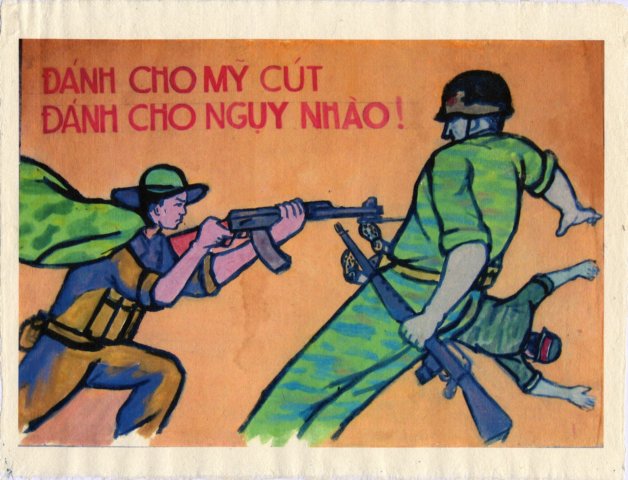
We can learn much from a much smaller neighbor Vietnam that developed its capability for external defense against the biggest powers on earth. The Vietnamese, led by Ho Chi Minh and a former history teacher Vo Nguyen Giap defeated the French at Dien Bien Phu in 1954. Also, after a protracted people’s war against the United States and its local puppets, it won a Victory in 1975 over the modern U.S. armed forces that led to the liberation and reunification of Vietnam. Likewise, in 1979, the Vietnam People’s Army humbled the China’s armed forces in a year-long border war. Though Vietnam has common northern borders with China, today, any potential aggressor that has ambitions over Vietnam will have to be prepared to bleed profusely and heavily in a very costly war in terms of casualties.
What is important is that we have patriotic and dedicated leaders whom our people can emulate to defeat aggressors of any kind who would violate the sovereignty and territorial integrity of the nation.###
